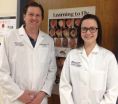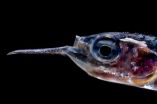(Press-News.org) An international team of researchers led by scientists at Virginia Tech and the University of California, Berkeley has discovered that a process that turns on photosynthesis in plants likely developed on Earth in ancient microbes 2.5 billion years ago, long before oxygen became available.
The research offers new perspective on evolutionary biology, microbiology, and the production of natural gas, and may shed light on climate change, agriculture, and human health.
"By looking at this one mechanism that was not previously studied, we will be able to develop new basic information that potentially has broad impact on contemporary issues ranging from climate change to obesity," said Biswarup Mukhopadhyay, an associate professor of biochemistry at the Virginia Tech College of Agriculture and Life Sciences, and the senior author of the study. He is also a faculty member at the Virginia Bioinformatics Institute. Plant and microbial biology professor emeritus Bob B. Buchanan co-led the research and co-authored the paper.
The findings were described this week in an early online edition of the Proceedings of the National Academy of Sciences.
This research concerns methane-forming archaea, a group of microbes known as methanogens, which live in areas where oxygen is absent. Methane is the main component of natural gas and a potent greenhouse gas.
"This innovative work demonstrates the importance of a new global regulatory system in methanogens," said William Whitman, a professor of microbiology at the University of Georgia who is familiar with the study, but not connected to it. "Understanding this system will provide the tools to use these economically important microorganisms better."
Methanogens play a key role in carbon cycling. When plants die, some of their biomass is trapped in areas that are devoid of oxygen, such as the bottom of lakes.
Methanogens help convert the residual biological material to methane, which other organisms convert to carbon dioxide — a product that can be used by plants.
This natural process for producing methane forms the basis for treating municipal and industrial wastes, helps reduce pollution, and provides methane for fuel.
The same process allows natural gas production from agricultural residues, a renewable resource.
Methanogens also play an important role in agriculture and human health. They live in the digestive systems of cattle and sheep where they facilitate the digestion of feed consumed in the diet.
Efforts to control methanogens in specific ways may improve feed utilization and enhance the production of meat and milk, researchers say.
Methanogens are additionally a factor in human nutrition. The organisms live in the large intestine, where they enhance the breakdown of food. Some have proposed that restricting this activity of methanogens could help alleviate obesity.
The team investigated an ancient type of methanogen, Methanocaldococcus jannaschii, which lives in deep-sea hydrothermal vents or volcanoes where environmental conditions mimic those that existed on the early Earth.
They found that the protein thioredoxin, which plays a major role in contemporary photosynthesis, could repair many of the organism's proteins damaged by oxygen.
Since methanogens developed before oxygen appeared on earth, the evidence raises the possibility that thioredoxin-based metabolic regulation could have come into play for managing anaerobic life long before the advent of oxygen.
"It is rewarding to see that our decades of research on thioredoxin and photosynthesis are contributing to understanding the ancient process of methane formation," Buchanan said. "It is an excellent illustration of how a process that proved successful early in evolution has been retained in the development of highly complex forms of life."
INFORMATION:
Dwi Susanti, the lead author, recently received her doctoral degree in genetics, bioinformatics and computational biology from the Virginia Bioinformatics Institute, and is currently a postdoctoral scholar in the Department of Biochemistry at Virginia Tech.
Usha Loganathan, a graduate student in the Department of Biological Sciences in the College of Science at Virginia Tech, also participated in the study. William H. Vensel of the Western Regional Research Center in Albany, Calif., provided proteomics expertise as did Joshua Wong of University of California, Berkeley. Rebecca De Santis and Ruth Schmitz-Streit of University of Kiel in Germany, and Monica Balsera of the Institute of Natural Resources and Agrobiology of Salamanca in Spain also worked on the project
Substance in photosynthesis was at work in ancient, methane-producing microbes
Discovery may shed light on climate change, agriculture, human health
2014-02-07
ELSE PRESS RELEASES FROM THIS DATE:
Finding could explain age-related decline in motor function
2014-02-07
SAN ANTONIO (Feb. 6, 2014) — Scientists from the School of Medicine at The University of Texas Health Science Center at San Antonio have found a clue as to why muscles weaken with age. In a study published Feb. 5 in The Journal of Neuroscience, they report the first evidence that "set points" in the nervous system are not inalterably determined during development but instead can be reset with age. They observed a change in set point that resulted in significantly diminished motor function in aging fruit flies.
"The body has a set point for temperature (98.6 degrees), ...
Gender influences symptoms of genetic disorder
2014-02-07
A genetic disorder that affects about 1 in every 2,500 births can cause a bewildering array of clinical problems, including brain tumors, impaired vision, learning disabilities, behavioral problems, heart defects and bone deformities. The symptoms and their severity vary among patients affected by this condition, known as neurofibromatosis type 1 (NF1).
Now, researchers at Washington University School of Medicine in St. Louis have identified a patient's gender as a clear and simple guidepost to help health-care providers anticipate some of the effects of NF1. The scientists ...
The fatality rate among hard drug users is 14 times higher than for the general population
2014-02-07
A new study analyses the risk factors and excess mortality among heroin and cocaine consumers admitted to treatment in Spain. The results reveal that the fatality rate among consumers of both drugs is 14.3 times higher than for the general population, while among those only using cocaine, it is 5.1 times higher.
In Spain the majority of deaths related to cocaine are not correctly certified and therefore up until now very few studies have been carried out that analyse the consequences of consuming these drugs in terms of mortality.
"Death certificates rarely include ...
Smithsonian reports GMO soybean pollen threatens Mexican honey sales
2014-02-07
Mexico is the fourth largest honey producer and fifth largest honey exporter in the world. A Smithsonian researcher and colleagues helped rural farmers in Mexico to quantify the genetically modified organism (GMO) soybean pollen in honey samples rejected for sale in Germany. Their results will appear Feb. 7 in the online journal, Scientific Reports.
David Roubik, senior staff scientist at the Smithsonian Tropical Research Institute, and colleagues developed the ability to identify pollen grains in honey in Panama and in Mexico during the 1980s and 1990s when they studied ...
Fish biomass in the ocean is 10 times higher than estimated
2014-02-07
With a stock estimated at 1,000 million tons so far, mesopelagic fish dominate the total biomass of fish in the ocean. However, a team of researchers with the participation of the Spanish National Research Council (CSIC) has found that their abundance could be at least 10 times higher. The results, published in Nature Communications journal, are based on the acoustic observations conducted during the circumnavigation of the Malaspina Expedition.
Mesopelagic fishes, such as lantern fishes (Myctophidae) and cyclothonids (Gonostomatidae), live in the twilight zone of the ...
'Steak-knife' teeth reveal ecology of oldest land predators
2014-02-07
The first top predators to walk on land were not afraid to bite off more than they could chew, a University of Toronto Mississauga study has found.
Graduate student and lead author Kirstin Brink along with Professor Robert Reisz from U of T Mississauga's Department of Biology suggest that Dimetrodon, a carnivore that walked on land between 298 million and 272 million years ago, was the first terrestrial vertebrate to develop serrated ziphodont teeth.
According to the study published in Nature Communications, ziphodont teeth, with their serrated edges, produced a more-efficient ...
Study reveals record rise in insulin use
2014-02-07
"Understanding the pattern of insulin use is limited by a lack of data characterising the prevalence of insulin use in the UK," according to Craig Currie, Professor of Applied Pharmacoepidemiology at Cardiff University's School of Medicine, who led the study alongside colleagues from the University of Bristol.
"Given the limitations, our study sought to calculate – for the first time – the best possible estimate of the rates of insulin for type 1 and type 2 diabetes."
In this retrospective study the team examined the number of patients receiving prescriptions for ...
Rett syndrome genetic variants now available for advance testing, diagnosis & research
2014-02-07
Philadelphia, PA, February 7, 2014 – Despite the identification of gene mutations in methyl CpG binding protein 2 (MECP2) being linked to Rett syndrome (RS), research has been hindered by the lack of commercially available reference materials. Through collaboration between the Centers for Disease Control and Prevention (CDC) and members of the clinical-laboratory and non-profit–research communities, 35 DNA samples containing many common RS genetic variants have now been characterized and made publicly available, eliminating a major stumbling-block for investigators and ...
New guidelines for reducing stroke risks unique to women
2014-02-06
For the first time, guidelines have been developed for preventing stroke in women.
"If you are a woman, you share many of the same risk factors for stroke with men, but your risk is also influenced by hormones, reproductive health, pregnancy, childbirth and other sex-related factors," said Cheryl Bushnell, M.D., M.H.S., author of the new scientific statement published in the American Heart Association journal Stroke.
The guidelines outline stroke risks unique to women and provide scientifically-based recommendations on how best to treat them, including:
Women with a ...
Cholesterol plays a critical role in hantavirus infection
2014-02-06
Viruses mutate fast, which means they can quickly become resistant to anti-viral drugs. But viruses also depend on proteins and nutrients provided by their hosts, and therefore one strategy to identify new anti-viral drugs is to identify and target such host-cell components. A paper published on February 6th in PLOS Pathogens reports that proteins involved in the regulation of cholesterol are essential for hantavirus entry into human host cells.
There are only about 30 known human cases of hantavirus infection in the US per year (with the 2012 cluster in Yosemite National ...
LAST 30 PRESS RELEASES:
First Editorial of 2026: Resisting AI slop
Joint ground- and space-based observations reveal Saturn-mass rogue planet
Inheritable genetic variant offers protection against blood cancer risk and progression
Pigs settled Pacific islands alongside early human voyagers
A Coral reef’s daily pulse reshapes microbes in surrounding waters
EAST Tokamak experiments exceed plasma density limit, offering new approach to fusion ignition
Groundbreaking discovery reveals Africa’s oldest cremation pyre and complex ritual practices
First breathing ‘lung-on-chip’ developed using genetically identical cells
How people moved pigs across the Pacific
Interaction of climate change and human activity and its impact on plant diversity in Qinghai-Tibet plateau
From addressing uncertainty to national strategy: an interpretation of Professor Lim Siong Guan’s views
Clinical trials on AI language model use in digestive healthcare
Scientists improve robotic visual–inertial trajectory localization accuracy using cross-modal interaction and selection techniques
Correlation between cancer cachexia and immune-related adverse events in HCC
Human adipose tissue: a new source for functional organoids
Metro lines double as freight highways during off-peak hours, Beijing study shows
Biomedical functions and applications of nanomaterials in tumor diagnosis and treatment: perspectives from ophthalmic oncology
3D imaging unveils how passivation improves perovskite solar cell performance
Enriching framework Al sites in 8-membered rings of Cu-SSZ-39 zeolite to enhance low-temperature ammonia selective catalytic reduction performance
AI-powered RNA drug development: a new frontier in therapeutics
Decoupling the HOR enhancement on PtRu: Dynamically matching interfacial water to reaction coordinates
Sulfur isn’t poisonous when it synergistically acts with phosphine in olefins hydroformylation
URI researchers uncover molecular mechanisms behind speciation in corals
Chitin based carbon aerogel offers a cleaner way to store thermal energy
Tracing hidden sources of nitrate pollution in rapidly changing rural urban landscapes
Viruses on plastic pollution may quietly accelerate the spread of antibiotic resistance
Three UH Rainbow Babies & Children’s faculty elected to prestigious American Pediatric Society
Tunnel resilience models unveiled to aid post-earthquake recovery
Satellite communication systems: the future of 5G/6G connectivity
Space computing power networks: a new frontier for satellite technologies
[Press-News.org] Substance in photosynthesis was at work in ancient, methane-producing microbesDiscovery may shed light on climate change, agriculture, human health




